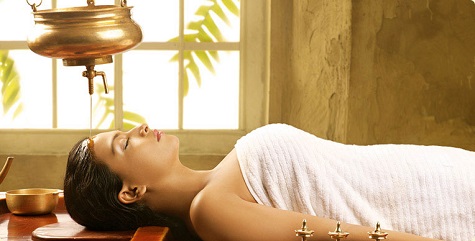Alternative Therapies
- Alternative Medicine
- Access Bars
- Access Body Processes
- Access Consciousness
- Access Energetic Faclift
- Acupressure
- Acupuncture
- Akashic Records
- Ancient Magnetism
- Angel Healing
- Aromatherapy
- Aura Reading
- Ayurveda
- Bach Flower Remedies
- Blueprint Numerology
- Breathwork
- Chakra Healing
- Cosmetic Acupuncture
- Crystal Healing
- Cupping Therapy
- Divine Healing Hands
- Distance Healing
- Emotional Freedom Technique (EFT)
- Energy Healing
- Energy Medicine
- Ergonomics
- Family Constellation
- Face Reading
- Fengshui
- Gaiadon Heart
- Geomancy
- Heal Your Life
- Graphology
- Holistic Solutions
- Holy Fire Reiki
- Homeopathy
- Ho'oponopono
- Humkara with Haleem
- Hypnotherapy
- Inner Child Therapy
- Intuitive Reading
- Jesus Reiki
- Jikiden Reiki
- Jin Shin Jyutsu
- Karuna Reiki
- Karmic Healing
- Lama Fera
- Lenormand Cards
- Light Language Healing
- Law of Attraction
- Manual Therapy
- Matrix Reimprinting
- Metaphor Therapy
- Meditation
- Mediumship
- Melchizedek Method
- Merlin Trinity Healing
- Merkaba Healing
- Money Reiki
- Motivational Counseling
- Mudra Healing
- Nakshatra Energies
- Naturopathy
- Neuro Linguistic Programming (NLP)
- Numerology
- Oracle Cards
- Panchakarma (Ayurveda)
- Panchkarma Holistic Healing - Mind Control
- Past Life Regression
- Pendulum Dowsing
- Physiotherapy
- Pranic Healing
- Pranic Psychotherapy
- Pythagorean Numerology
- Quantum Touch Healing
- Pyramids
- Redikall Healing
- Reiki
- Rudraksh
- Runes
- Soul Plan Reading
- Sound Healing
- Star Magic Healing
- Space Clearing
- Sujok therapy
- Tarot
- Theta Healing
- Twin Flame Healing
- Twin Hearts Meditation
- Unani Medicine
- Yoga
- Wicca
- Womb Healing
Diseases & Conditions
- Acne & Pimples
- Allergies
- Arthritis
- Asthma
- Behavioural Disorders
- Cancer
- Dandruff
- Diabetes
- Emotional Problems
- Gallstones
- Gastritis
- Hairloss
- Heart Diseases
- Hormonal Problems
- Hypertension
- Immune Disorders
- Infections
- Infertility
- Jaundice
- Kidney Disorders
- Liver Disorders
- Menstrual Disorders
- Migraine
- Neck & Back Pain
- Obesity
- Osteoporosis
- Peptic Ulcer
- Prevention
- Prostate Problems
- Psoriasis
- Sexual Dysfunctions
- Sinusitis
- Sleep Disorders
- Skin Diseases
- Stress
- Thyroid Disorders
- Ulcerative Colitis
- Urinary Infections
General Wellness
Ayurvedic Treatment Centres For Panchakarma in Mumbai

The three stages of Panchakarma therapy.
- Panchakarma is always performed in three stages Purva Karma (pre-treatment), Pradhana Karma (primary treatment) and Paschat Karma (post-treatment). The patient who opts for any one of the five therapies has invariably to undergo all the three stages.
- Snehana (oleation / oil therapy) and Swedana (sudation) are the two Purva Karma procedures. Snehana (internal and external oleation) loosens the Amam stuck in various sites of the body and Swedana dilates the channels to facilitate its movement towards the Koshta (alimentary canal). The Amam that reaches the Koshta is eliminated during the Pradhana Karma (primary treatment).
- Diet regimens, restricted bodily exertion, and the intake of health-promoting drugs come under the Paschat Karma (post-treatment).
Panchakarma is a purifying therapy to enhance the metabolic process through food and herbal medicines. It is used in deep rooted chronic disease as well as seasonal imbalance of tridoshas. As the wastes are eliminated from the body the person becomes healthy
Literally Panch means five and Karma means action. So Panchakarma means five types of actions or techniques or treatment. These types of therapeutics are based on elimination therapy. Panchakarma treatment is very effective in diseases like hemiplegia, polio, rheumatoid arthritis, skin diseases, epilepsy, insomnia, hypertension, cardiac problems, intestinal diseases, peptic and duodenal ulcers, ulcerative colitis and asthma. Besides this, it produces immunity and increases youthfulness of the body.
Panchakarma includes five types of treatment which are as follows
Vamana Use of emetics
This therapy is mainly used in cases of chronic disorders due to Kapha dosha. It involves induced and controlled vomiting with the help of medicines. It is used to treat chronic asthma, chronic hyperacidity etc. Vamana should not be given to the very young or very old or during pregnancy and should always be administered under a physicians supervision.
Virechan Use of laxatives
This therapy is mainly used in cases of chronic disorders due to Pitta dosha. It involves induced and controlled purgation with the help of medicines. It is used to treat jaundice, chronic helminthes cases etc. Virechan should not be given to the very young or very old or during pregnancy and should always be administered under a physicians supervision.
Basti Medicated enema
Involves administering medicines as enema. The medicines used can be decoctions, pure/formulated oils, milk etc. It is used to cure arthritis, backache etc. Basti should not be given to the very young or very old or during pregnancy and should always be administered under a physicians supervision.
Nasya Nasal administration of medication
Nasya is administered through the nose. Medicated powders, decoctions or oil drops are introduced into the nasal passages. They remove residual doshas and toxins from the head and neck area. Nasya is used in cases of migraine, chronic rhinitis, epilepsy etc.
Rakta Mokshana Blood letting
Rakta Mokshana is done either with the help of venesection, or using leeches. It is mainly used to cure gout, skin and blood disorders (pigmentation), elephantiasis, alopecia. Raktamokshan should not be given to the very young or very old or during pregnancy and should always be administered under a physicians supervision.
Panchakarma therapy should always be followed by a special diet regime that includes khichadi among other things.


